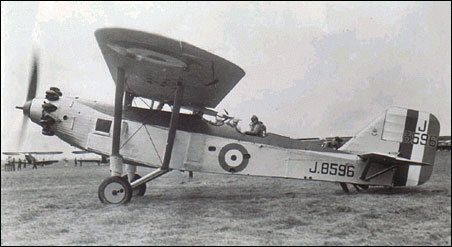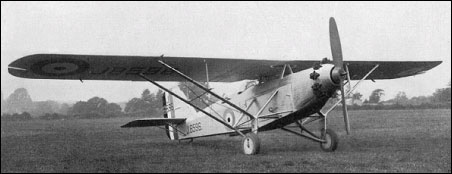 |
Westland Witch1928 |  |
| DAY-BOMBER MONOPLANE | Virtual Aircraft Museum / United Kingdom / Westland |
 |
In the middle 1920's, the Air Ministry issued a Specification for a single-engined high-altitude day-bomber and the Westland design staff, by then thoroughly monoplane-minded, seized the opportunity to produce the Witch, a two-seat parasol monoplane. Judged by its contemporaries this machine was impressive, and a well-considered attempt at securing an aerodynamic advance in design. Compared with biplanes it had a not disadvantageous structural weight, adding its quota of evidence that the high-wing type advocated by Westland was the lighter manner of building a monoplane. First flown in 1928, by Flt.-Lt. L. G. Paget, A.F.C., the Witch had an ingenious external structure, forming part of the wing bracing system, which enabled a large clear space to be left in the fuselage for internal bomb-stowage. The bomb compartment closed by four flap-doors in the front fuselage floor, and was so arranged that they would flick open by the weight of the bombs, in the event of an emergency release preventing manual opening. Although it was a good weight lifter, neither the Witch nor its competitors showed a performance which gave a sufficient improvement above the existing day-bombers, and the class was dropped. However, the Westland example, J.8596, had a useful career as an experimental aircraft and finally served for a long period with the Parachute Training Unit at Henlow. A.H.Lukins "The Book of Westland Aircraft", 1943
|  COMPANY PROFILE | |||||||||||||||||||||||||||||||||||||||||
 |

|


